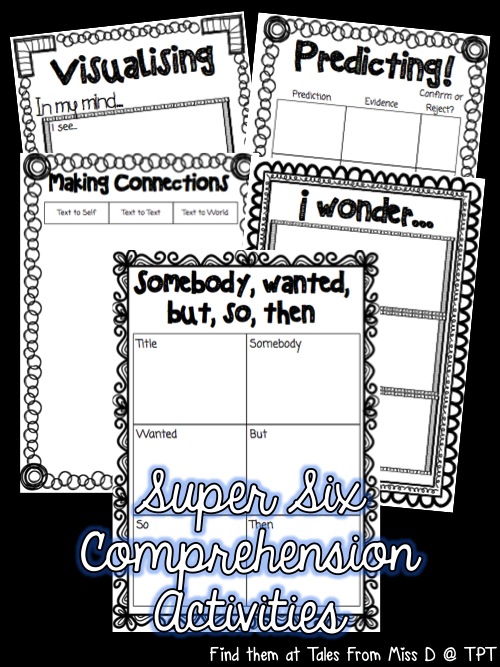a) get your students to look closely at the clues in the text
and
b) get them to do it automatically, rather than have the teacher prompting all the time
To start off, define what predicting means. Explain that we predict before, during and after reading. Talk about what students can use to make a prediction; cover, titles, illustrations, blurb and text.
Pick a text and have students make a prediction. Give them the sentence starter "I predict". When they tell you their prediction, ask them why they think that. What clues from the text did they use? The sentence starter now becomes "I predict.....because.....".
You can use the above discussion for during reading predictions too.
As for after reading, the discussion turns to talking about what would happen if the author were to write a sequel. Students will use the events from the story to make this prediction. The sentence starter would be "I predict that......would happen next because.....". This can then turn into a writing task if you wish.
It is also important to confirm or reject predictions. That is, talking about whether they were right or wrong. Confirm or reject is just a more technical and nicer way of putting it. At this point, emphasise that it's totally okay if their predictions were rejected. Build up esteem by talking about how well they used the clues from the text :)
A neat way to set up this activity is to use three columns. My Prediction, What Happened and Confirm/Reject. The first two columns are pretty self explanatory, the confirm/reject can be completed with either a tick or a cross, or a C or a R.
If you want students to write about their predictions, here are some ideas;
1) Sentence starter "I predict" or "I predict....because..." Students can draw a picture to support their writing
2) Two columns. My Prediction and Clues From The Text
3) Have students predict what the characters will do, what the problem will be and how they will solve the problem.
My all time favourite activity is to stop reading just before the big ending. Have students write what they think will happen and draw a picture. Then read the ending and compare. It's one activity that the students absolutely love and it's pretty interesting seeing what they come out with.
That's pretty much it for predicting. If you are looking for some graphic organisers they can be found in my Super Six Activity Pack;
Next up in the series; Making Connections!


Predicting is on one of my favorite strategies to teach....inferring on the other hand...a bit trickier!
ReplyDeleteLaurie
Chickadee Jubilee
This is awesome information that you provide us.
ReplyDeleteI am very thankful to you for sharing this information with us.
I am glad for new students.
level furnished living yaletown-richards